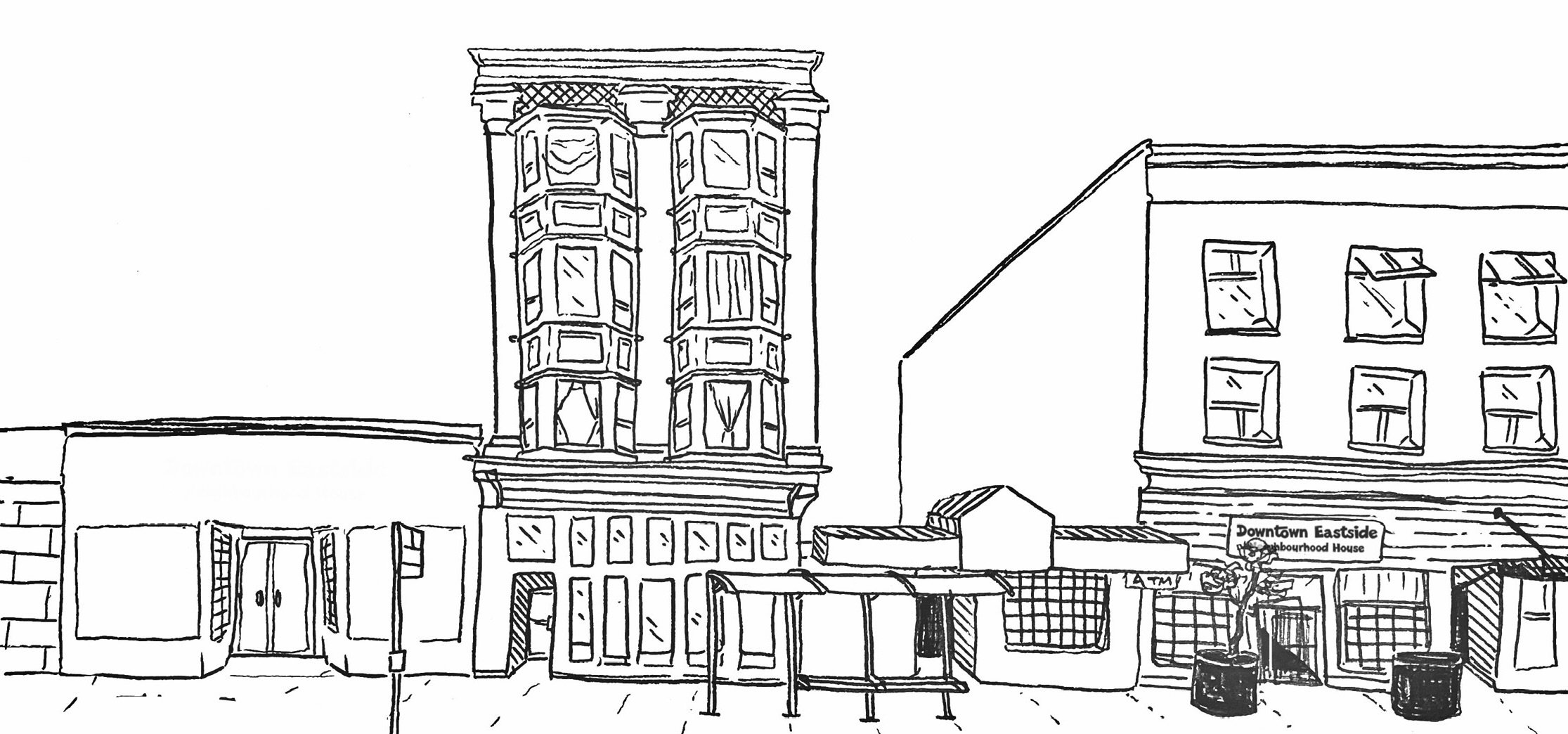
Our History
In October 2004, more than 20 residents of the Downtown Eastside came together to form the Downtown Eastside Neighbourhood House (DTES NH) Steering Committee. Their goal was to create a secular, grassroots Neighbourhood House that would welcome individuals, families, youth, and elders of all ancestries.
By May 2005, we began operating as a satellite of Gordon Neighbourhood House—an affiliate of the Association of Neighbourhood Houses of Greater Vancouver—benefiting from the mentorship and support of both organizations. In June 2009, we became a registered non-profit society.
Residents of the DTES often face what has been described as “the soft bigotry of low expectations”—the casual assumption that those who are materially poor are also morally, spiritually, or intellectually lacking. Society frequently projects onto our community the idea that facing the challenges of inner-city life—such as mental health struggles, income inequality, nutritional vulnerability, racial injustice, aging, or single parenthood—makes us less than full, complex human beings.
The glory of our Neighbourhood House is that we are it, and it is us. It is a pocket of grassroots privilege where disadvantages fade into the background—not as defining characteristics, but as simple facts of life. Here, they are no more determining than wallpaper.
In 2005, with just one part-time staff member, no physical space, and an annual budget of $23,000, we built our first community partnerships. These included the Grand/Parent-Tot Drop-In at Lore Krill Co-op and Shiloh Housing Society, and youth outings with Urban Native Youth.
In August 2006, we launched Welfare Wednesday Banana Beat, our first Nutritional Outreach initiative. With a twist of dignity and potassium, we greeted roughly 700 people in monthly social assistance lineups with:
“Sir/Madame, would you like a little potassium to start your day?”
In February 2007, we introduced a Leadership Development Program for grandparents of young children. This evolved into The Mentorship Continuum, our strategy to sustain learning and work opportunities within the community.
On May 4, 2007, we opened our first storefront—824 square feet that hosted over 35 hours of weekly programming. In 2008, DTES NH became a founding member of LILAHC (Low-Income Land Use and Housing Coalition), working to ensure that the longstanding low-income community remains central in shaping the future of our neighbourhood.
That same year, we launched Splendour in the Night, our annual portrait homage to DTES residents. Each autumn, we set up sidewalk pop-up tents and capture portraits of our neighbours. These portraits are projected throughout the night of December 21—the longest and most difficult night of the year—at Oppenheimer Park, illuminating our shared space with the manifest beauty of our community.
In July 2008, in partnership with the Environmental Youth Alliance, more than 200 residents helped paint a vibrant mural on our storefront wall and built a companion garden. Imagine the bliss of butterflies in the Downtown Eastside.
In 2009, students from Simon Fraser University’s LEAD program helped us design a custom Youth Leadership Institute. Around the same time, we began our second wave of Nutritional Outreach: Roving Community Kitchens. Equipped with humble blenders, we visited sister organizations like InSite’s Chill Room and the Aboriginal Front Door, engaging hundreds of neighbours with nutrient-rich smoothies—reaching those who might not otherwise join a traditional community kitchen.
Our food programming reflects our DTES NH Food Philosophy: whole, healthy food is a right—not a privilege. Every offering of food is a reminder of the inherent dignity and deservedness of our neighbours.
We have proudly participated in the BC Farmers’ Market Coupon Program since 2007. Funded by the provincial government, it provides low-income parents of young children access to fresh, local produce, fish, and meat each summer. More recently, we’ve developed DTES Kitchen Tables: A Community-Led Food Action Plan, in partnership with Potluck Café.
In February 2010, we partnered with Carnegie Community Centre to create HomeGround, a sanctuary for unhoused neighbours during the 2010 Olympic Games—when the inner-city sidewalks that serve as living rooms for many were expected to be disrupted.
Our national partnerships have focused on community-based environmental equity research, collaborating with UBC, Ryerson, and the Universities of Toronto and Manitoba. These relationships continue to inform our weekly environmentally focused programming.
By 2009, DTES NH was welcoming nearly 8,000 participants per year, with an annual operating budget approaching $250,000. That year’s Benefit Concert, featuring the Solidarity Notes Labour Choir, raised $7,500. The second annual concert, scheduled for March 27, 2010, would feature Vancouver’s Universal Gospel Choir.
Funders (as of November 2009):
Alexandra Foundation for Neighbourhood Houses, Building Opportunities for Business Inner-City Society, City of Vancouver, Central City Foundation, DASH BC, BC Gaming Commission, Margaret Mitchell Fund for Women, Public Health Agency of Canada, Unitarian Church of Vancouver, United Way, UBC’s Partnering in Community Health Research, Vancity Credit Union, Vancouver Foundation, Vancouver Parks & Recreation Board.
Donors (as of November 2009):
Acme Delivery Company, an anonymous East Hastings businessman and his beloved, Dynamic Mutual Funds, East End Food Co-op, General Paint, Gordon Neighbourhood House, Leede Financial Market Inc., the Pedersen Family (in memory of Peggie Pedersen), Sasamat Outdoor Centre, Vancouver Elementary School Teachers Association (VESTA), Eva Zen, and countless individuals from the DTES and beyond who have generously contributed time and resources.
